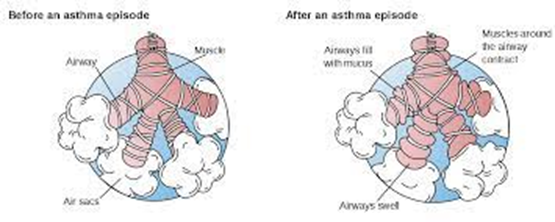A nurse is caring for a client who is being evaluated for multiple sclerosis. Which of the following tests should the nurse anticipate the provider will order to assist with diagnosis?
Myelogram
Brain natriuretic peptide
Troponin level
Lumbar puncture
The Correct Answer is D
Choice A Reason:
Myelogram is not appropriate. This imaging test involves injecting contrast dye into the spinal canal to visualize the spinal cord and nerve roots. While it may help identify certain spinal cord abnormalities, it is not typically used as a primary diagnostic tool for multiple sclerosis.
Choice B Reason:
Brain natriuretic peptide (BNP) is not appropriate. This blood test measures the level of BNP, a hormone produced by the heart, which can be elevated in conditions such as heart failure. It is not used in the diagnosis of multiple sclerosis.
Choice C Reason:
Troponin level is not appropriate. Troponin is a protein released into the bloodstream during a heart attack or other heart-related conditions. This test is used to diagnose heart muscle damage and is not relevant to the diagnosis of multiple sclerosis.
Choice D Reason:
Lumbar puncture is appropriate. Also known as a spinal tap, a lumbar puncture involves collecting cerebrospinal fluid (CSF) from the spinal canal for analysis. In the diagnosis of multiple sclerosis, analysis of CSF can help identify certain abnormalities, such as an elevated level of immunoglobulin G (IgG) or the presence of oligoclonal bands, which are often indicative of inflammation in the central nervous system. Therefore, a lumbar puncture is commonly ordered to assist with the diagnosis of multiple sclerosis.
Nursing Test Bank
Naxlex Comprehensive Predictor Exams
Related Questions
Correct Answer is D
Explanation
Choice A Reason:
Osteoporosis is inappropriate. Chronic respiratory acidosis can lead to osteoporosis over time due to several factors, including chronic hypoxemia, which can affect bone metabolism and lead to bone loss.
Choice B Reason:
Polyuria is inappropriate. Polyuria, or increased urination, is not typically associated with chronic respiratory acidosis. In fact, respiratory acidosis tends to cause retention of bicarbonate ions, which can lead to compensatory metabolic alkalosis and decreased urine output.
Choice C Reason:
Anxiety and depression is inappropriate. Chronic respiratory acidosis can lead to symptoms such as lethargy, confusion, and decreased mental acuity due to the effects of elevated CO2 levels on the central nervous system. While anxiety and depression are not direct consequences of chronic respiratory acidosis, individuals with COPD may experience anxiety and depression as a result of their chronic respiratory condition.
Choice D Reason:
Delirium is correct. Delirium, characterized by an acute change in mental status, confusion, and altered consciousness, can occur in severe cases of chronic respiratory acidosis, especially during acute exacerbations. Elevated CO2 levels can affect brain function and lead to symptoms of delirium.
Correct Answer is C
Explanation
Choice A Reason:
Decreased mucus production contributes to airway constriction: This statement is incorrect. Bronchospasm does not decrease mucus production; instead, it primarily affects the smooth muscles surrounding the bronchioles, leading to their constriction and narrowing of the airways. Increased mucus production, often accompanied by inflammation, can contribute to airway obstruction in conditions like asthma.
Choice B Reason:
Inflammation is reduced due to airway diameter: This statement is incorrect. Bronchospasm typically occurs in the setting of inflammation in conditions such as asthma. Constriction of the airways during bronchospasm exacerbates the inflammation and can further narrow the airways, leading to symptoms such as wheezing and dyspnea.
Choice C Reason:
Bronchospasm occurs when there is inflammation, edema, and excess mucus: This statement is partially correct. Bronchospasm often occurs in the presence of inflammation, edema, and excess mucus production, as seen in conditions like asthma. These factors contribute to airway hyperresponsiveness, leading to bronchospasm and airway narrowing.
Choice D Reason:
Airway obstruction occurs due to thinning mucus: This statement is incorrect. Airway obstruction in conditions like asthma is primarily due to bronchospasm, inflammation, and excessive mucus production, rather than thinning mucus. Thinning of mucus would not typically contribute to airway obstruction.

Whether you are a student looking to ace your exams or a practicing nurse seeking to enhance your expertise , our nursing education contents will empower you with the confidence and competence to make a difference in the lives of patients and become a respected leader in the healthcare field.
Visit Naxlex, invest in your future and unlock endless possibilities with our unparalleled nursing education contents today
Report Wrong Answer on the Current Question
Do you disagree with the answer? If yes, what is your expected answer? Explain.
Kindly be descriptive with the issue you are facing.
